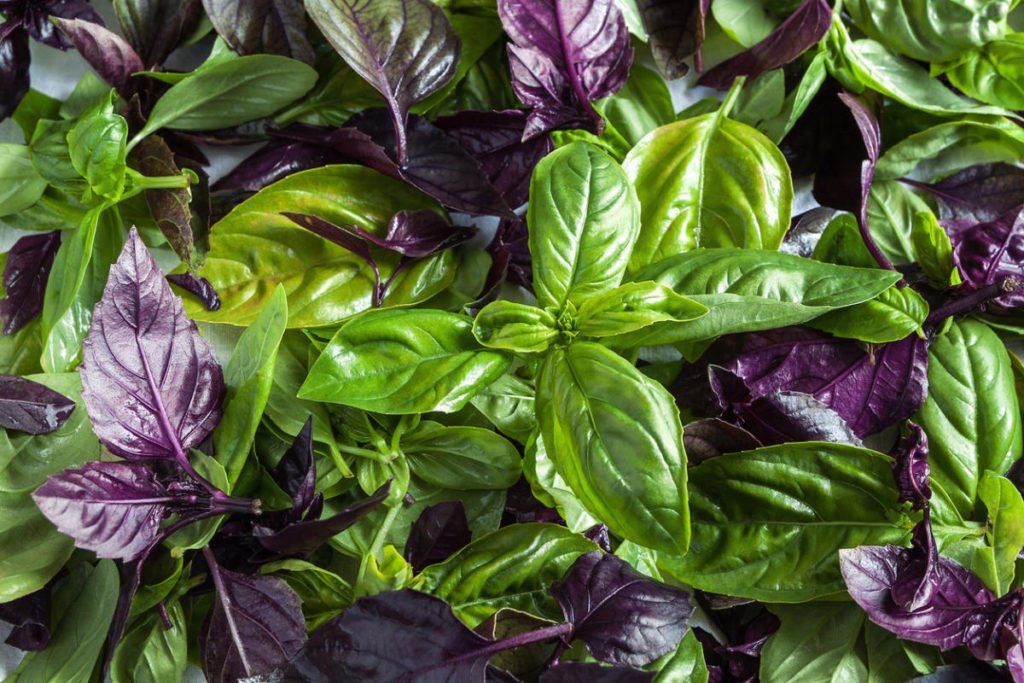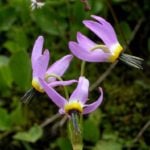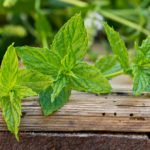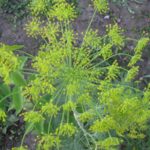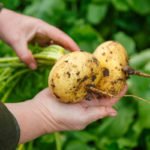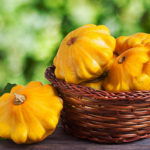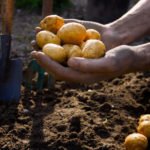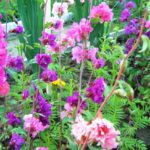Basil-a beautiful plant, a wonderful healer and a favorite spice, the secrets of growing which I will tell you in this article.
A native of Asia, but not all countries immediately appreciated his merits, despite the fact that he was worshipped in Iran, India and Ceylon. By the way, the Indians believed that Basil leaves is a kind of passport to heaven for the deceased. Worshipped this plant in Greece-translated from the Greek Basil means “Royal”.
It took several centuries before Basil was appreciated in Europe: at first It was grown in Italy, where it gained fame as a symbol of family well-being and fertility, then in France, where Basil became a favorite spice.
Growing Basil
Basil-a valuable fragrant annual plant, forming a very decorative branched Bush, depending on the variety reaching a height of 20-60 cm
Also, depending on the variety, oblong-oval shiny Basil leaves can be bright green, dark green and even green-purple. Difference between leaves of different varieties of Basil are not only in color but also in form: have one flat, the second — with a graceful carved edge, well and thirdly all ruffled. They can be large or small, narrow or wide, but it is because of their divine flavor, in fact, and grow Basil.

Basil begins to bloom in late July-early August. Just at this point in its leaves accumulate the maximum amount of essential oil, why they exude an even more pleasant aroma. You probably already guessed that it is best to collect them at this time.

Many people think that Basil is valued only for its fragrant foliage, but there is another reason. Small white flowers of Basil, unsightly at first glance, attract to the garden whole flocks of pollinating insects, which is why the bushes of the plant are constantly as if moving. Already by mid-September on the site of Basil flowers ripen fruit-black and purple nuts.
Planting Basil
This year I decided to plant Basil under young apples and pears, the crowns of which are very small and do not give shade. As a result, around the trees turned out a kind of decorative fragrant green ring: and beautiful, and useful — strong smell of Basil deters pests from the trees.

Like most herbs, Basil loves open Sunny areas with fertile waterproof and breathable soil — it is in this place and it is necessary to plant. The constantly wet and heavy soil, the plant develops a very bad, sick, and eventually dies.
Choosing where to plant Basil, note that it can not be grown for several years in a row in one place, this can lead to a mass disease of plants “Fusarium wilt” — this is when the leaves appear brown spots. To return Basil to his former place of landing is possible not earlier than in 5 years. With the place decided, went to put)

Basil suffers from the slightest decrease in temperature, it does not tolerate cold, so its permanent place seedlings planted only when it is warm outside. Under Basil make 2 kg of humus, compost and peat on 1 m2. We plant seedlings in the ground at a distance between the beds — about 30 cm, and between the plants themselves — 15-20 cm, on a cloudy day, only in the evening. After planting, young Basil seedlings immediately thoroughly watered, preferably with warm water.
Reproduction of Basil
Basil is well propagated by seeds. Sowing to a depth of about 1 cm is carried out in early April in boxes filled with well-moistened land substrate consisting of equal parts of garden land, peat and humus

Basil is very responsive to fertilizer application, so before sowing the land substrate is watered with a special solution:
- water-5 l;
- potassium sulfate-0.5 tsp;
- potassium chloride-0.5 tsp;
- superphosphate-0.5 tsp;
- urea-0.5 tsp.
Basil, as I wrote above, is very thermophilic, the optimum temperature for germination of its seeds is high enough, within +25…+28°C, remember this. In addition, we provide crops with moisture, for which we cover the container with seeds with ordinary glass or film. After sowing, very little time passes, and already on the 7-8 day shoots appear.

Seedlings do not need special care; the only thing you need to carefully monitor — soil moisture: you can not allow the soil to dry out, as well as waterlogging, because of which the seedlings can get sick with a black leg and die. In case of defeat of Basil seedlings with a black leg, immediately treat them with a solution of copper sulfate (1 teaspoon per 2 liters of water).
You can sow Basil seeds and directly into the open ground.

This should be done not earlier than the beginning of June. Immediately after sowing, cover the grooves with a film, which we remove only after the seedlings ascend.
Care of Basil
Care for basil is timely watering and feeding. Water as the soil dries, preventing its waterlogging, and fertilize once a month, using nitrogen fertilizer, stimulating the growth of green mass of the plant.

The first time we feed the Basil after 12 days after planting seedlings in the ground, for example nitrophos: in 12 liters of water we breed 2 tablespoons of nitrophos, consumption — 3-4 liters per 1 m². Water only with warm (about +25°C) water.
In addition, to achieve maximum branching of the Basil, just remove the emerging stems, it will give the opportunity to cut young leaves and tender tops of shoots several times a season

Care for basil is in the periodic loosening of the soil around the plants, as well as timely weeding from weeds. Weeding and loosening I spend quite often — about 7 times during the growing season. Immediately after weeding the plants thoroughly watered.
Do not forget that the Basil is thermophilic, so young immature plants the first 2 weeks after planting, I cover the film. If the daytime temperature is above +20°C, the film is removed, but in the evening be sure to return it to the place.
Harvesting Basil
Like most herbs, basil should be collected separate leaves, trying not to pull out the main plant. Just regularly cut or break off the tops of the shoots along with the leaves.

Dry Basil leaves can only be in the shade, and only where there is sufficient air circulation. I’m doing this under cover: connect the cut-off tops of the shoots in small bundles and just hung from the ceiling. If you have a dryer for vegetables, greens can be dried in it.
Types and varieties of Basil
There are more than 150 varieties of basil, below-the most popular of them.
Ocimum basilicum
This is the most common species that is grown around the world. Bushes of this species reaches 50 cm in height, the green has a rather tart taste.

The best varieties of ocimum basilicum are considered:
- ‘Magical Michael’ is a very good bush.

- ‘Mammoth’ – different large leaves with a rather sharp taste.

- ‘Genovese Gigante’ — любимец итальянцев.

Cinnamon basil
Cinnamon basil-a plant that reaches 0.5 m in height.

The leaves have a taste of cinnamon, the flowers are pale lilac-purple.
Lemon basil
Lemon basil has a strong lemon smell that exudes its leaves, and the same taste.

